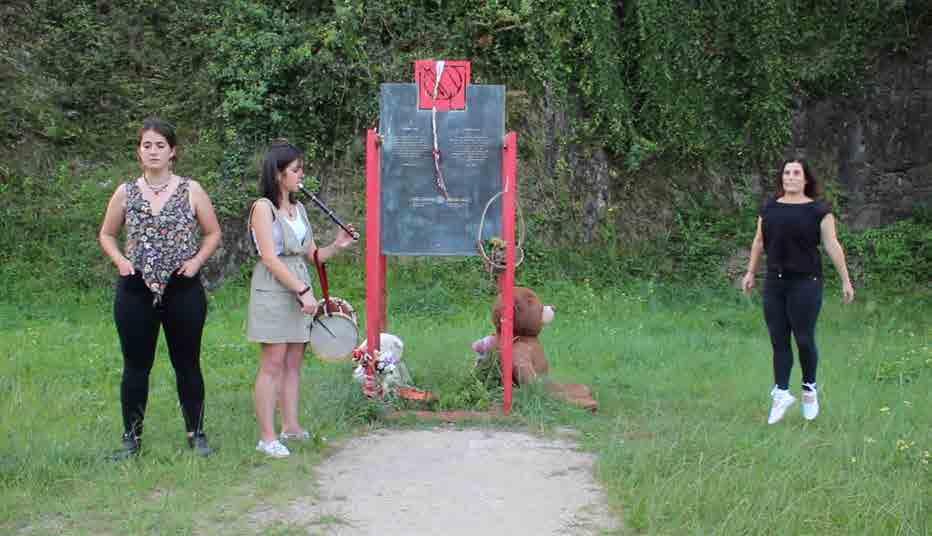
2 minute read
ART AL QUADRAT
GEMA DEL REY JORDÁ, MÖNICA DEL REY JORDÁ (València, 1982) https://www.artalquadrat.net/
Art al Quadrat was set up in 2002 and consists of the twin sisters Mònica and Gema del Rey Jordà (Valencia, the second of August 1982). They are represented by Coll Blanc Gallery in Culla (Castellón). Graduated in Fine Arts. Faculty of Fine Arts San Carlos (Universitat Politècnica de València) 2000-05. Master in Artistic Production. Faculty of Fine Arts San Carlos (Universitat Politècnica de València) 2007-08. PHD in Art: Production and research with International mention. Faculty of Fine Arts San Carlos (Universitat Politècnica de València) 2008-12 (M). Artistas gemelas mujeres madres (Twin artists twin women mothers), in this order, is the definition of our self at this moment and in each of these stages, there is a struggle and a political position against the established that constructs the work of Art al Quadrat.
Advertisement
Art al Quadrat, crée en 2002, est l’union de sœurs jumelles : Gema et Mònica del Rey Jordà (Valence, 2 août 1982). Elles sont représenté par la galerie Coll Blanc à Culla, Castellón.
Diplômés en Beaux-Arts Faculté des Beaux-Arts de San Carlos (Universitat Politècnica de València). 2000-2005. Diplômé du Master en Production Artistique de la Faculté de BBAA San Carlos (Universitat Politècnica de València). 2007-2008. Doctorat en Art : Production et recherche avec Cum Laude et mention internationale de la Faculté des Beaux-Arts de San Carlos (Universitat Politècnica de València). 2008-2012 (M). Artistas gemelas mujeres madres (Artistes jumelles, femmes mères), dans cet ordre, c’est la définition de nous-mêmes à ce moment et à chacune de ces étapes, il y a une lutte et une prise de position politique contre l’establishment qui construit l’œuvre d’Art al Quadrat.

De coros danzas y desmemoria / Of choirs, dances and dismemory. 2020. Installation.
The Valencian artists known as Art al Quadrat reflect on the role assigned to women by the Sección Femenina (Female Section) after the end of the Spanish Civil War. In their public spectacles, the Sección Femenina attempted to convey to the population what Franco’s regime called ‘the regional diversity of Spain’, using women as mere decorative elements almost comparable to regional folklore. Emulating the activities of this institution, the artists travelled all over Spain recovering Republican songs and dances from the Civil War, turning Franco’s map into a journey celebrating the dignity of vanquished women through the medium of music and dance. In the fragment exhibited here, the artists approach the Saturrarán women’s prison through the improvised verses sung by two young extempore poets from Mutriku.
De coros danzas y desmemori / De chœurs, de danses et d’oubli. 2020. Installation.
Les artistes valenciennes Art al Quadrat réfléchissent sur le rôle relégué par la Section féminine aux femmes une fois la guerre civile terminée. Dans ses spectacles publics, la section féminine tâchait de divulguer ce que le régime de Franco appelait la diversité régionale de l’Espagne, en utilisant pour cela la femme comme élément purement décoratif et même comparable au folklore régional. Imitant les activités de l’institution, les artistes ont voyagé à travers toute l’Espagne en récupérant les chansons et les danses à thématique de la guerre civile du camp républicain et ont transformé la carte franquiste en un véritable parcours de la dignité des femmes vaincues au moyen de la musique et de la danse. Dans l’extrait exposé, les artistes se rendent à la prison de femmes de Saturrarán grâce aux bertsos [chants d’improvisation en vers rimés et strophés] de deux jeunes bersolaris de Mutriku.








